Finishing is where a printed piece becomes something you’re proud to hand over. In Madison shops and in‑plant rooms, that often means folding, collating, and preparing sets for stapling or stitching. The MBM 408A is a programmable tabletop folder that plays a central role in booklet workflows. While it isn’t a stapler or stitcher itself, it creates the precise folds and signatures that make clean, professional booklets possible—fast and repeatable.
Why the folder matters so much
A booklet that sits flat and flips cleanly begins with accurate folds. If a fold drifts even a few millimeters, panels misalign, covers look off, and the spine bulges. The 408A brings accuracy and speed to that step. You program the fold type—half, tri‑fold, Z, double‑parallel, gate—or custom, set paper size and weight, and the machine repeats that fold on stack after stack. When you return to a repeat job, stored programs save time and lock in consistency.
Real‑world workflow
Picture a training packet for a department in the Capitol or a program guide for a campus event. You print interiors, covers, and inserts. The 408A handles the folds for the interior signatures and the cover score (with the right setup), so the stapling or stitching step goes smoothly. Operators stage incoming stacks on a cart, run a quick test, and then feed at a comfortable pace while quality stays tight. Because it’s tabletop, the 408A fits in small finishing corners next to a cutter and a small booklet maker or stapler.
Setup in plain terms
The control panel is clear, and fold plates adjust with direct, readable markings. Paper guides keep stacks square, and skew adjustment prevents creeping edges. If you switch between 20 lb text and heavier cover stock, a short test finds the sweet spot for rollers and speed so the fold stays sharp without scuffing. Operators learn a routine: jog, test, check alignment, then run. That rhythm keeps quality high and downtime low.
Consistency that protects your brand
Whether you’re preparing church bulletins on Monroe Street or a donor brochure for a nonprofit near Atwood, consistent folds turn good design into good print. The 408A helps every copy look like the proof—panels align, margins match, and sets stack square for the stapler. For teams that send work out to events or mailers, that polish shows up in responses and renewals.
Maintenance and care
Rollers need cleaning. Guides need checks. The 408A makes those tasks straightforward. Clear access points and a simple schedule keep things tight. We train operators to spot glaze on rollers, to log jobs, and to pause for a quick wipe‑down between paper types. When care is easy, it happens—and jams and marks stay rare.
Where it fits around Madison
- In‑plant rooms folding interiors and covers for short‑run booklets.
- Agencies and design studios preparing folded comps for client review.
- Schools and nonprofits creating programs and newsletters on schedule.
- Small shops that need pro‑level folds without a floor‑standing unit.
Your team is the hero
A good fold comes from an operator who notices details. The 408A supports that person with a panel that makes sense, settings that stay put, and results that match the proof. When deadlines move up, they can trust the folder and focus on catching the tiny things that separate good from great.
Rollout with our Madison finishing team
We deliver, set up, and calibrate the folder for your common papers. We’ll program your top jobs, train your staff on a repeatable routine, and leave a quick reference next to the machine. As your mix changes, we help retune and add programs so repeats stay consistent.
Quick setup checklist
- Program your top five folds (sizes + weights).
- Create a jog‑test‑check routine and post it.
- Stage carts for incoming and finished stacks.
- Add a simple roller‑cleaning schedule.
- Keep scrap sheets for quick test folds by each stock.
Fold types, in plain terms
- Half‑fold: Simple booklet signature, menus, programs.
- Tri‑fold or Z‑fold: Letters and brochures; Z helps fit binders.
- Double‑parallel or Gate: Thick guides and special layouts.
Paper science that affects results
- Grain direction: Fold with the grain for flatter sets.
- Static & humidity: Keep paper wrapped until use; a small humidifier near finishers reduces static jams in winter.
Quality control routine
Jog → test 5 sheets → measure panel widths → adjust skew → run 25 → stack check → proceed. Post this routine; it pays off in fewer reworks.
Pairing with other gear
Works best next to a cutter (trim to size first) and a stapler or booklet maker. The cleaner the fold, the easier the binding step.
Maintenance that sticks
Weekly roller wipe, monthly deep clean, and a quick visual on guides before big jobs. Keep a “troubles table” with scrap sheets for fast tests.
Buyer checklist
- Top five fold programs we’ll save?
- Paper weights we run most?
- Space for carts on in/out sides?
- Who owns the cleaning schedule?
FAQs
1) Is the 408A a stapler/stitcher too?
No. It prepares precise folds and signatures. Pair it with a stapler or booklet maker for the binding step.
2) Can it handle heavier or coated stocks?
Yes, within supported ranges. We’ll test your papers and set speed/pressure so folds stay sharp without scuffing.
3) How hard is training?
Most operators are comfortable after a short hands‑on session. The panel and markings are clear, and stored programs help repeats run smoothly.
Make your booklets look the way you designed them. Call our Madison finishing team, open a quick chat, or send the contact form—ask for an on‑site fold test with your papers and a simple, written proposal.
